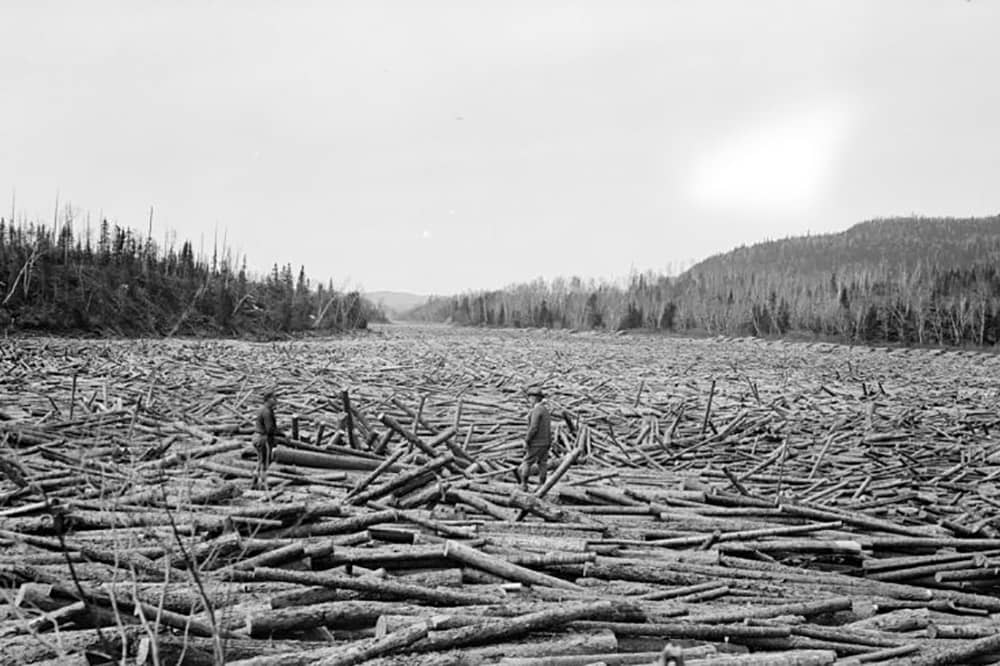A large number of boaters enjoy the majestic river today.
THE SAINT-MAURICE: THE HISTORY OF A WATERWAY
The first historical reference to the river can be traced back to 1535. Jacques Cartier was the first to describe the waterway in his notes as he crossed the river mouth during his second voyage of discovery in the Gulf of St. Lawrence. He named it Fouez River. However, he was unaware that the Atikamekw people had long called it Tapiskwan sipi, the river of the threaded needle.
In 1723, the river was officially named the Saint-Maurice, in reference to the fief of Saint-Maurice, a seigneurial domain on the west bank granted to Maurice Poulin de Lafontaine in 1668.

Log drivers in action on Saint-Maurice River, which was used to transport logs for almost 150 years. Here, in 1933.
The waterways
Full steam ahead
Navigating the meandering and powerful river in a canoe or a flat-bottomed rabascaw took a great deal of courage and knowledge. Over time, goods were transported primarily along the 130 km of waterway that separated La Tuque and Grandes-Piles village. In 1854, a steamboat owned by the Norcross and Philipps company was the first to navigate the sector while the St. Maurice Railway and Navigation Company transported passengers and goods by train to Grandes-Piles and then by boat to La Tuque.
The history of log driving
Logging companies also used the river current to transport wood for almost 150 years. The last log drive in Quebec was in 1996 on the Saint-Maurice River. While the log drivers may have retired, the Saint-Maurice River has not! Today, it provides energy for several electric power stations and welcomes a host of vacationers and boating enthusiasts who sunbathe and fish along its shores every summer. Did you know that you can find 42 species of fish between La Tuque and Trois-Rivières? You can always get a bite here!